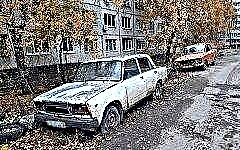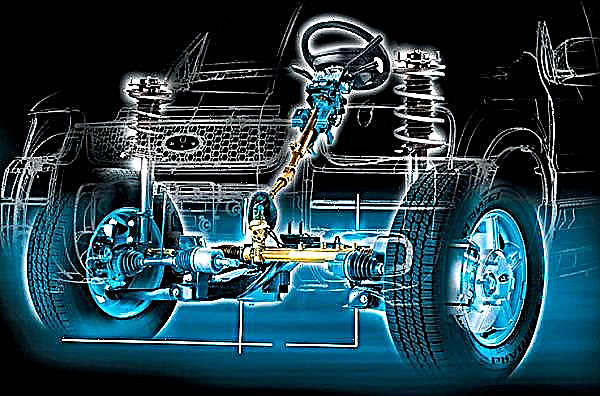We will test four types of preparations intended for cleaning the fuel system of a car. In the course of the analysis, we will compare the positive effect obtained as a result of the use of these drugs and gasoline with cleaning additives.

Clogged injectors of the engine is a fairly common fact with frequent use of the car. Loss of engine agility, poor descent and other starting and driving problems are indicative of their contamination. In order to solve this problem, there are two options: replacing the nozzles or cleaning them. The first option is quite expensive and not always advisable. You can wash the injectors in a car service, but you can also independently use the fuel system cleaners specially designed for this, which are poured into the tank.

We will conduct an experiment in cleaning engine injectors using four preparations, on the basis of which we will analyze and compare them:
- American Hi-Gear (price 280-300 rubles);
- German Liqui Moly (price 400 rubles);
- German Autoprofi Line (price 480-520 rubles);
- Russian "Suprotek" (price 400-450 rubles).
Someone may have a question: Why do we need cleaners, if gasolines have long appeared on the market, which, during combustion, clean the engine and prevent clogging of its elements?
Indeed, there is a cleaning effect from the use of these types of gasoline. It is achieved due to the content of detergents in their composition. However, it is not possible to refuel with such gasoline everywhere, besides, it is expensive. The main purpose of this type of fuel is to prevent the formation of deposits in the form of sludge, and not directly purify. That is, if the engine is already dirty, then this gasoline is unlikely to help - it will only prevent more pollution. This became clear after the experience of using Lukoil Ecto A95-K5 gasoline with detergents.

On the left is the piston after the reference contamination.
On the right - soot on a candle - a typical appearance after the engine has "eaten" dirty fuel.
Will the fuel system cleaner spoil the gasoline?
Initially, the experimenters were convinced that the use of detergents in the composition of gasoline would not contribute to its deterioration. This became clear after conducting experiments with the addition of detergents to the gasoline composition and subsequent analysis of the composition in laboratories. Experts have found that almost all the purifiers participating in the experiment are in full compliance with the Technical Regulations established by the Customs Union, and their introduction does not affect the octane number. The exception was the Hi-Gear brand cleaner, which, as it turned out, contains a certain amount of resins. Resins are probably used as a lubricant additive - the description of the cleaner contains information about improved fuel lubrication.
All drugs introduced into gasoline contribute to an increase in oxygen concentration, however, it is still far from the limiting norm of its content (2.7%). An increase in oxygen levels indicates that oxidizers contain oxygen in the composition, which enhance the combustion process. It is due to this that high-temperature cleaning of the engine occurs. To the greatest extent, the oxygenating properties were found in the "Suprotek" brand cleaner. It is worth noting that the use of these drugs must comply with the instructions - exceeding the dose can lead to a failure in the engine management system.

The photo on the left shows a piston of an engine running on fuel with a Suprotek cleaner, on the right - a candle after running on gasoline with Liqui Moly in the composition.
The cold part of the engine system is also susceptible to contamination that other cleaners fight against. After their inclusion in the composition of gasoline, an increase in the pH in the composition of the fuel is observed. The best performance in neutralizing acid build-up was found with the Hi-Gear Cleaner. But there is another side of the coin: an increase in acidity can contribute to a change in the life of the seals in the fuel system. Therefore, a moderate increase in pH due to the use of Liqui Moly and Suprotek is most optimal.
During the examination, it turned out that fuel system cleaners do not contain hazardous ingredients that can adversely affect gasoline (metals, gases benzene, methanol) and lead to a change in the octane number.
Detergent effect of fuel system cleaners
All drugs involved in the experiment work according to the promises of the manufacturers. As a result of their use, the level of deposits on engine parts has been significantly reduced. It is likely that with prolonged use of fuel with purifiers in the composition, an even higher level of purification is possible. In the course of the analysis, we took into account the factor of self-cleaning of the engine as a result of exposure to high temperature conditions, and minus this effect, it turned out that all drugs work.

The photo shows the test results of the fuel system cleaners
The best cleaning performance was found when using Liqui Moly preparations and the domestic "Suprotek", which is its analogue. In a constant load mode, the use of these components helps to reduce gasoline consumption by an average of 4%, and at idle speed - by all 8%. A decrease in the level of hydrocarbons was found in the composition of the gases used, which is the most important indicator of the level of clogging of the engine of a car. Experiments with gasoline have shown that in the absence of purifiers in its composition, no changes occur, but Lukoil Ecto gasoline has a positive effect on the combustion process, the result of which is saving fuel and reducing CH in the composition. This testifies to its cleansing qualities. However, it was noticed that a positive trend is observed only after repeated use. At the first stages of the transition to gasoline with detergents, there is even a decrease in the performance of the engine. The reason is the active flushing of deposits from the fuel system, which leads to a deterioration in the formation of mixtures. But after prolonged use, there is an improvement in the dynamics and stabilization of the engine due to its purification.
The principle of operation of gasoline of this brand is similar to the effect of cleaning additives, but softer (due to a lower concentration of active ingredients).
The weight analysis of the constituent components confirmed this fact - the use of fuel cleaners is most effective. The best results were shown by Liqui Moly and Suprotek.
So is it worth using fuel system cleaners?
Experiments have shown that cleaning agents work. However, car owners may have a completely logical question: how do they affect the operation of the motor? Do they wear it out faster?
- The inclusion of drugs in gasoline leads to an increase in the oxygen concentration. All types of gasoline on sale have a relatively large supply of this indicator, so there should not be any special problems due to the excess of the oxygen level. However, this factor should be taken into account, therefore, when using cleaners and including them in the fuel, use only high quality gasoline.
- It should also be borne in mind that at the initial stages of using fuel cleaners (especially with a heavily contaminated engine), a significant deterioration in the engine performance parameters is possible.The practice of using the means shows that it is possible to manifest not only instability in the work of the motor system, but also to turn it off. This is due to the fact that the washed away dirt inside the system clogs the constituent components of the gasoline metering system. This fact suggests that the use of all chemicals is rational only as a preventive measure, but not for deep cleaning. Therefore, if you know that the engine of the engine has not been cleaned for a long time and the level of its pollution is high, then it is better to take the car to a service and entrust the cleaning to professionals.
- The effect of the work of engine cleaners is achieved only under certain operating conditions. So, if you filled your car with gasoline with an additive, and then immediately got stuck in a traffic jam, then the cleaning effect is unlikely to be noticeable. By the way, the best option would be to carry out temperature and chemical cleaning at the same time... That is, after adding the composition to the gasoline and pouring the mixture into the tank, it is better to immediately drive a car for several kilometers, and at a high speed. The use of gasoline with washing units is always more optimal, so if there is an opportunity and funds allow, then it is better to use this option. However, if there is no possibility, you can use the cleaners we have tested every six months (as a preventive measure).
Sources of engine contamination and clogging control methods
When operating a car, the fact of only partial combustion of fuel is inevitable. Residual oil and combustion products are deposited in the combustion chamber. This leads to a change in the level of compression, a violation of the thermal balance, and a narrowing of the combustion chamber. All this together can lead to engine detonation.
In general, engine malfunctions, depending on the specific area, can have various causes. So, on the valves or in the combustion chamber, solid large particles are mainly deposited, which, when organic matter gets in, stick to each other and form a kind of layers. And in the fuel compartment of the engine, dirt is deposited in the form of varnish films.
Depending on the type of contamination, two different principles are used to eliminate them. The varnish in the fuel system should be removed with solvents, and the layers in the combustion chamber with high temperatures. The temperature rise is achieved through the use of special additives in gasoline. It also helps to drive hundreds of kilometers at high speed without stopping - this contributes to high-temperature cleaning.
Research methodology
During the tests, we used a methodology that was used to assess the pollution control effect of using gasoline. We artificially polluted the engines, after which we analyzed the parameters of its pollution with resins and combustion products, after which we used improved gasoline on them. All stages of the tests were recorded as a result of quantitative and qualitative analysis, after which the indicators were checked against the initial data and with each other.














